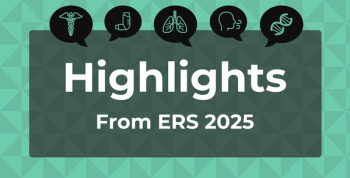
Medicaid Cuts Have Far-Reaching Consequences in Women's Health: Alina Salganicoff, PhD
Alina Salganicoff, PhD, discusses the immediate effects of the budget cuts to Medicaid as it pertains to women's health across the country.
The budget bill crafted by Republican lawmakers and dubbed the One Big Beautiful Bill Act contained many changes in funding for health care services, including reductions in funding for Medicaid and the elimination of funding for Planned Parenthood, which could have sizeable effects in rural and women's health. Alina Salganicoff, PhD, senior vice president and director for women's health policy at KFF, spoke with The American Journal of Managed Care® about what these changes in the budget bill can mean for health care across the country.
The budget bill passed on July 3 has added provisions to cut off Medicaid funds from Planned Parenthood. Although this has since been blocked by a federal judge, what does this mean for the future of funding of Planned Parenthood federally?
The future of many Planned Parenthood clinics is in jeopardy. Planned Parenthood, Maine Family Planning, and the attorneys general from several states are challenging the constitutionality of a provision within the 2025 Reconciliation Budget Bill. This provision blocks federal funds from going to Planned Parenthood and certain other providers for all health care services, not just abortion, for 1 year. Medicaid pays clinics for the family planning services they provide to patients but does not pay for abortion care because of the Hyde Amendment’s ban on the use of federal funds for abortions (except in the cases of rape, incest, or life endangerment). Under the new law, patients may no longer be able to use their Medicaid coverage to get care such as contraception, cancer screenings, and sexually transmitted disease testing at Planned Parenthood sites. Although a federal court ruling has temporarily blocked the law's implementation, the Trump Administration is expected to appeal the decision.
Several Planned Parenthood clinics across various states have already announced closures, and Planned Parenthood estimates that as many as 200 clinics nationwide are at risk of shutting down. If fully implemented the
On June 26, the Supreme Court sided with Medina in the Medina v Planned Parenthood case that allowed for South Carolina, and any other state, to withhold Medicaid funds from Planned Parenthood and other abortion clinics. What are the repercussions of this decision, especially as it pertains to Planned Parenthood’s future operation in South Carolina and other states?
The Supreme Court's
During the webinar
The closure of or cutbacks in Planned Parenthood clinics will likely have significant impacts on the communities they serve. Planned Parenthood functions as a high-volume specialty provider, offering a focused range of services to a large number of people. In many communities, Planned Parenthood is the only clinic offering reproductive health care, including contraception, sexually transmitted infection testing and treatment, abortion services, pregnancy testing, cancer screenings like Pap smears and breast exams, and other preventive services. One cannot assume that federally qualified health centers, rural health clinics, or state health departments can adequately fill the void created by a Planned Parenthood closure. Many such facilities do not offer the full spectrum of contraceptive options, operate with limited hours, or lack staff trained to provide these specialized services.
This situation is compounded by other
Another aspect of the Medicaid cuts that could affect women’s health is the increased use of Medicaid in rural areas for childbirth. With the cuts to Medicaid in the budget bill, how might this coverage be affected and how can this gap be patched should these cuts to Medicaid be made permanent?
Medicaid has become a major source of coverage for millions of women and is the
The new law will also affect rural hospitals, which are expected to experience significant financial shortfalls as a result. The Medicaid program finances almost half (47%) of all births in rural areas. The rural hospital funds allocated in the law are unlikely to sufficiently offset the anticipated financial strain many rural hospitals will face due to these changes. This could lead to closures of hospitals or maternity services and impact those in rural communities most directly.
What can state government and advocates do to address the long-term Medicaid cuts that are set to affect the country?
The impact of this complex law on low-income people, providers, health systems, and state budgets is complex and far reaching. Most people know someone who has been served by the Medicaid program, which covers 20% of people living in the United States. Moreover, the program is a major part of the economy, accounting for one-fifth of health care spending, more than half of spending for
Newsletter
Stay ahead of policy, cost, and value—subscribe to AJMC for expert insights at the intersection of clinical care and health economics.













































